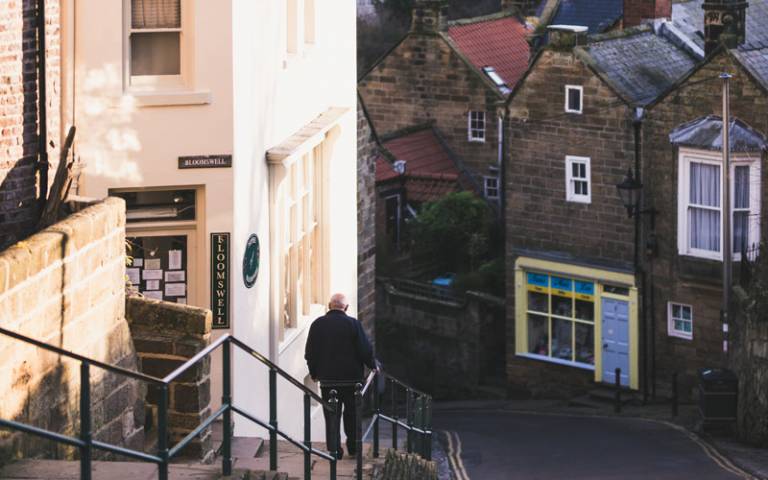Neighbourhoods of the future
11 February 2019
Dr Evangelia Chrysikou, Director of the Bartlett Real Estate Institute’s MSc Healthcare Facilities, has contributed to a white paper that provides a revolutionary vision of the UK housing market.

Dr Evangelia Chrysikou, director of BREI’s MSc Healthcare Facilities, has contributed to a white paper that provides a revolutionary vision of the UK housing market.
'Neighbourhoods of the Future', an Agile Ageing Alliance report which was launched at the House of Lords in January, recommends a fundamental shift in the way housing development is considered in the UK. Rather than housing being a progression of homes to suit different stages in life, we need buildings that can be adapted for changing requirements.
The report, written by cross-sector experts and thought leaders and published in conjunction with Tata Steel, envisages the development of ‘smart’ intergenerational age-friendly neighbourhoods. They would comprise ‘cognitive homes’ which are affordable, sustainable, easier and more efficient to construct and connected to hi-tech systems tailored to meet the diverse needs of an ageing population.
The report proposes rethinking how the UK’s housing stock is financed, built and updated.
“Currently our built environment is too fragmented and far too partial,” said Dr Chrysikou. “If we want the built environment not to be our societal weak link, it is important to determine how to bring on board the people who actually experience these spaces daily and encounter the difficulties of old age from the beginning as decision makers.”
In her paper “First do no harm: the Hippocratic Oath as an inspiration for compassionate architecture”, Dr Chrysikou argues that the current building stock limits opportunities for meaningful and autonomous lives, contributing to increased loneliness and isolation in old age, as well as physical health problems.
The user experience in terms of the ordinary built environment is rarely addressed in architecture education.
Currently the gap created by inadequate architectural built environments is covered by technology but this is mostly for implementing mechanisms such as sensors for early intervention in falls. Adding the design of the built environment into this equation could prevent some of those falls in the first place, says Dr Chrysikou.
She argues that this inclusive approach to design should be taught in architectural schools and continuous education courses for professionals working on the planning and delivery of the build environment.
Image: Tom Kulczycki, Unsplash
 Close
Close

